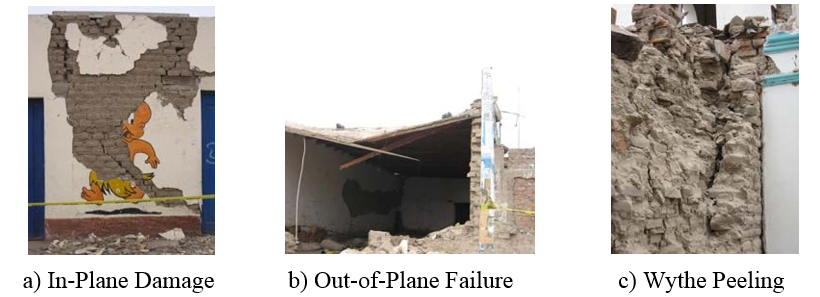Arturo E. Schultz
Professor, Dept. of Civil Engineering, Univ. of Minnesota, Minneapolis, MN 55455, USA, schul088@umn.edu
ABSTRACT
On August 15th, 2007, a magnitude 8.0 earthquake occurred in Peru at 6:34 pm local time with epicenter near Chincha Alta. The earthquake was strongly felt in Lima, 150 km to the north. Government estimates indicate that more than 500 people were killed by the earthquake, over 1,000 people were injured, in excess of 40,000 houses were destroyed and 4 hospitals collapsed. With sponsorship from the Council for Masonry Research (CMR), the author represented The Masonry Society (TMS) in a reconnaissance team organized by the Earthquake Engineering Research Institute (EERI). The goal of the investigation was to learn from the field observations made following such disasters, and to disseminate this information so that it can be used to change codes and practices in the U.S. with a view to improving the performance and safety of masonry buildings. Two compelling reasons for TMS to investigate the effects of the August 15, 2007 earthquake in Peru included the large inventory of masonry buildings which have been constructed over the past century, and news reports of widespread damage in the affected region. Structural damage was extensive, especially in adobe and other types of non-engineered construction, while damage to engineered masonry was generally limited in severity and extent. Confined masonry, which comprises masonry walls that are confined by a lightly reinforced concrete frame that is poured after the masonry is erected, performed well, even when it was non-engineered or built with adobe.
KEYWORDS: adobe, confined masonry, damage, earthquake, unreinforced masonry
C2-5



